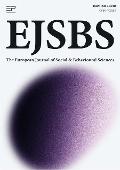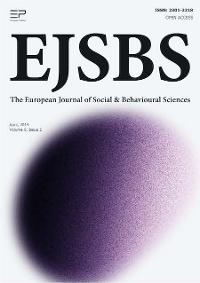Abstract
Purpose of Study: The purpose of our study is to enable students and teachers to build upon their own subjective stance in order to meet the professional competence requirements set by our diverse society and the demands of Higher Professional Education. Research Methods: Method for collecting data was done by; a) Questioner to 24 students b) Participatory action research c) Focus interview Method for analyzing data was done through an abductive discussion between the theory and the empiric in order to create a narrative, a story. Findings: Pedagogical tools and routines can sometimes be seen as straitjackets rather than helpful alternatives. We have shown alternative practices and tools that foster both students and teachers in the role of a subject. These are for example; artistic expressions, such as drawing and drama, progressive portfolios framed by a problem based learning setting. Conclusions: When teachers are inviting student to become subjects in their own learning processes, the vice versa also happens. Subject positions will nourish subject positions and higher education will create “higher” from the perspective of both broader and deeper education.
Keywords: Creativity, subject, higher education, dialogue
Introduction
Higher education of today demands pedagogical spaces where students and teachers enter authentic dialogues. In professional universities; in the authors´ case, the social field, students meet societal demands and develop life quality with clients and their environment. A reflective and intuitive practitioner employs competences that comprise knowledge, practice repertoires and values. This is why education cannot be described in neutral, so-called objective rhetoric. At Arcada we see that a creators of these spaces must take into consideration subject takes from both teachers and students. However, as students enter Higher Education they are used from previous studies to be objectified in their own learning processes. Experiences from their previous studies have often made student detached from their learning as knowledge creation. Finding means to foster students´ subjective take is related to teachers own position of being subjects in their role as teachers.
Problem Statement
Treating each other as subjects with mutual respect has traditionally been a part of the process of Edification (Bildung) in Higher Education. However, in today’s educational climate of efficiency Higher Education has become more of a service producing institute. Students in Higher Education often lack experience of being subjects in their own studies while teachers still presuppose both self-regulation and ability to reflect. This lack of experience of being subjects in own learning also tease teachers in higher education to treat not only student but rather the whole learning process very objectified. Thus, we argue that the problem is that objectified stance to learning invites objectified interaction something that does not foster deep learning, reflection and ability to believe in changes. Instead, we have sought alternative and different learning approaches that would break down the objectification in learning.
To overcome the dilemma teachers´ own subjectivity and ability to act as committed agents in mentoring and fostering students is problematized. Pedagogical tools when becoming routines function as straitjackets but pedagogy holds a potential for an educational purpose of subjectification. Our choice when creating pedagogical spaces with aesthetic means proposes as an alternative practice in Higher Education.
Research Questions
Our research questions are two folded:
- How could pedagogical spaces when creatively charged be created to invite subjective stance (rather than objectified) for both teachers and students in Higher Education?
- How aesthetic means trigger and enable students to become change agents to their own learning?
Purpose of the Study
The overall purpose of our study is to create learning opportunities where students and teachers are enabled to build upon their own subjective stance in order to professional competence requirements set by our diverse society and the demands of Higher Professional Education. Our aim in the case study is to identify and detect subjective dimensions in objective educational contexts through creative means for the creation of dialogical pedagogical spaces Bringing aesthetic expressions into education and professional development is in the case study related to a specific professional course for students in social services.
Research Methods
Method for collecting data was done by;
a) Documentation of a participatory action research approach throughout the process of study design. Action research has great potential in inviting subjective positions in learning processes. The participatory action research was undertaken as a philosophy for the whole module. From a team teaching approach, where the examination of knowledge was seen as the first step in a pedagogical design, followed up by choosing study activities such as drawing, drama, storytelling, field notes were documented. A progressive portfolio was framed by a professional problem based setting for the students.
- Questioner to 24 students
In the beginning of course modules “gerontology” for social workers (25 ECTS) at bachelor level an open -ended questioner was handed out to all 24 students. Guiding questions were;. The same questions were given to the same students two months later after completion of the course.
- In the beginning of the course module every student was asked to draw two separate pictures. The first one under the label; myself as 75-years old and the second one of where am I living as 75-years old? These drawings were then in smaller groups presented and used as a trigger for problem based learning.
- Students were asked to articulate a challenge in elderly care and then to find and read scientific papers in order to meet this challenge. After reading and analyzing articles the students were asked to take on a scientific role in order to solve the challenge not only as a student but as a researcher. This agency of change was expressed in class as drama where students played both the role of the personnel in elderly care only to later shift to the scientist who “came visiting” the elderly care settings with some suggestions for changes. In the following phase the students were asked to story their intention of being change agents.
- Focus interview
As the student presented their drama with the twist of change management the audience was practical training teachers. These teachers were focus interview after the students’ drama presentation.
Method for analyzing data was done through an abductive reasoning between the theory and the empiric in order to create a narrative where the different subjective positioning’s where given voice.
Findings
We show that alternative practices foster both students and teachers in their roles as subjects; agents. Integrating personal experience with professional experience has shown to be relevant to professional growth. Besides combining personal experience and professional experience we found artistic expressions forms effective in bringing students into change-agency-mood. Drama and drawing became forms where students were not only allowed but asked to reflect upon their own role in and as agencies for change in elderly care settings.
As the student draw pictures of them they spontaneously commented phrases like: where do old people have wrinkles? or How old is actually 75-years of age? And when they draw pictures of where they lived as 75 years old they commented: I do not want to live alone or I want to live close to my horses and my grandchildren.
In the drama about scientist entering problematic elderly care settings some of the students went further in their exploration of the scientist as a person they got acquainted with. They portrayed not only the scientific stance and philosophy of a scientist they spiced the drama by identifying features in the scientist´s familiar status and working settings (for example lecture at university) and the method used by the scientist for collecting data. All of this together demonstrates that students opened up for a much more reflective and simultaneously personally engaged discussion not only for fellow students but also for the teacher.
Conclusions
When teachers invite students to become subjects in their own learning processes, the vice versa also happens. Social creativity in education supports students to become in charge of their studies. Teachers subject positions nourish students´ and are nourished themselves due to the dialogic inter subjective character of arts and aesthetic learning processes. Universities, academic as well as professional for the purpose of being “higher” in the sense of broader and deeper teaching and learning, seek ways of enriching pedagogical practices from routines to alternative ones.
Acknowledgements
The author(s) declare that there is no conflict of interest.
References
Biesta, G. (2010). Good education in an age of Measurement. Ethics, Politics, Democracy. London: Paradigm Publishers.
Dewey, J. (1938/1960) Logic. The theory of inquiry. New York, NY: Holt, Rinehart and Winston, Inc.
Boal, A. (1980). Förtrollad, förvandlad, förstenad. Stockholm: Gidlunds.
Gibson, J. J. (1979). The ecological approach to visual perception. Boston: Houghton Mifflin.
Heathcote, D. (1985). Role distancing in drama work. Unpublished papers (Course material)
Howatson-Jones, L. (2013). Reflective practice in nursing (Second Edition). London: Sage.
Kemmis, S., & McTaggeert, R. (2005). Participatory action research: Communicative Action and the Public Sphere. In N. K. Denzin, & Y. S. Lincoln (Eds.), The SAGE handbook of qualitative research (3rd ed.). Thousand Oaks: CA, Sage.
Kemmis, S. (2007). Action research as practice-changing practice, Educational Action Research Journal, 17(3), 463-474. DOI:
Moon, J. (2010). Using Story in Higher Education and Professional Development. London: Routledge. DOI:
Silius-Ahonen, E. (2006). Fantasi i kunsk apsbildande. Ingår i Silius-Ahonen (red.) Vägen till yrkeskompetens. Hur syns pedagogiken i den professionsinriktade högskoleutbildningen? Helsingfors: Arcada Publications.
Silius-Ahonen, E. (2010). Kroppen som text. Om läsning av det kroppsliga i lärande. I n A. Slotte-Luttge (Ed.), Plastkassar och andra texter. Perspektiv på ett vidgat textbegrepp (pp. 89 – 100). Åbo Akademi Publikation 20/2010.
Silius-Ahonen, E. (2012). Silence, imagination and the pedagogy of place. In H. Fiskå Hägg & A. Kristiansen (Eds.), Attending to silence. Educators and philophers on the art of listening (pp. 102 – 118). Agder: Portal Academic.
Copyright information

This work is licensed under a Creative Commons Attribution-NonCommercial-NoDerivatives 4.0 International License.


